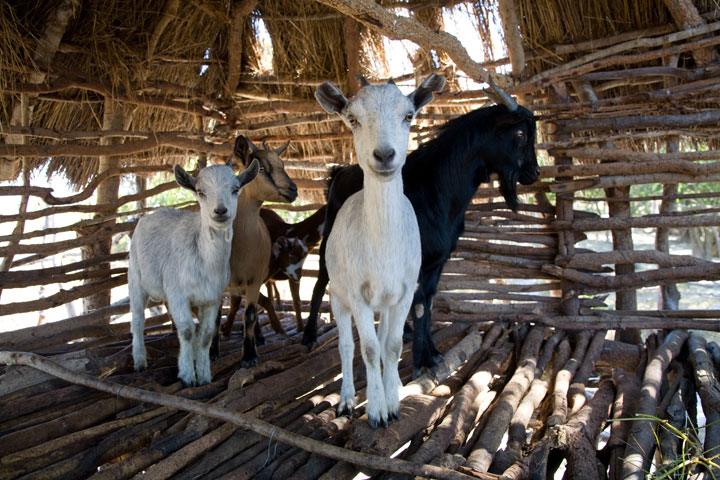TORONTO – If Old Kris Kringle had a farm, you can bet he’d be giving out goats. At least that’s what many “ethical givers” would have you believe as they start selecting meaningful presents for loved ones this holiday season. One program that offers the bleating beauties is Plan Canada’s “Gifts of Hope.”

But what does it really mean to give a goat? And what purpose does it serve: food, wool, milk? All of the above?
We asked vice president of donor marketing Jeff Cornett the ins and outs of goat-giving, so you know exactly what kind of impact that hoof print is leaving behind. And he knows his stuff–Gifts of Hope has raised over 40,000 goats in the last ten years.
Where do the goats come from?
“We certainly don’t buy Canadian goats and ship them across the oceans,” said Cornett. “We purchase the goats in the communities and regions and markets in which we’re developing the programs, and that ensures the goats are the right goats for that particular region; therefore it helps to stimulate local economies.”
How long does it take for a family to get their goat?
Plan Canada works with communities over many years to make sure a livestock program involving goats will actually provide a benefit. This includes training for local residents on how to care for the goats and building pens (more on that later).
Does the family get the money and buy the goat themselves or does someone from your organization buy and deliver the goat?
Plan Canada buys the goats–either through local Plan staff or by working with local organizations to manage the purchase, said Cornett. Plan Canada also delivers the goats to the identified family in need.
Where does the family keep the goat?
Plan Canada may not physically build a pen for the family, but will provide resources, money and training on how to do so.
“We’ll make sure that that is taken care of. It may be that we’ll set up vocational training for the entire community on what good, safe, healthy pens look like and then help purchase the supplies so the community or families can actually build their own pens,” said Cornett. He said there’s no cost transferred to the family, since typically they are the poorest or most marginalized families in the community and therefore don’t have any capital of their own.
How much is the actual cost of the goat versus the $75 donors pay?
It doesn’t work out to $75 per goat; instead, donations are all pooled together then distributed in communities to cover identification of families most in need, veterinarian training, equipment for pens, and following up to see how the livestock programming progresses, said Cornett.
Although goats have different prices depending on the region, Cornett said the actual cost of male goats–in Zambia, for example–is around $200 and females are in the $25 range. Typically three females are bought for every one male.
“Most programs have a pay-it-forward aspect: The families most in need are delivered a number of goats to start a breeding program. Quite often the requirement is the first baby goat is passed on to the next family in that community, and then the next family benefits from the second generation of goats. It makes sure the impact and wealth of the program is spread to as many recipients as possible.”
Who pays for the goat’s food?
Since programs are customized to the individual countries Plan works with–Zimbabwe, Zambia, and Nepal this year–programs in very dry places will provide food.
“Goats are incredibly hearty creatures; they can survive on almost anything,” said Cornett. “Goats can eke out a living grazing on stubble of the crops that are still in the fields, or husks of corn or whatever grain that’s been processed. So typically goats can fend for themselves in the community.”
What happens if the goat gets sick?
Cornett said the number of goats that get sick is very small if the program is well-designed. Canadian vets aren’t sent over to the countries, but training is provided to members in the community.
“We’d make sure Zimbabwe veterinarian schools, and information and skills, are hired and trained into the community. Quite often most of the veterinarian skills are pretty basic on keeping the hooves clean, dealing with ear infections, etc.”
Cornett said he’s proud of the Gifts of Hope program and has seen celebrations where families have received goats or are physically passed from one families’ arms into the next.
“There’s a real celebration made of it. It’s pretty cool.”






Comments